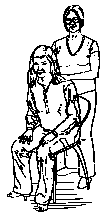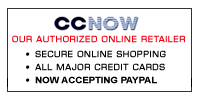Creating limitation
You compose your own experience, by the way you filter and select from the profusion of information constantly available to you.  You compose your experience from a small subset of that information, and throw away the rest. Choosing different subsets leads to very different experiences. The "faces/vase" illustration provides a simple example, but this phenomenon pervades your experience.
You compose your experience from a small subset of that information, and throw away the rest. Choosing different subsets leads to very different experiences. The "faces/vase" illustration provides a simple example, but this phenomenon pervades your experience.
This isn't just a visual phenomenon; it happens with all your experience -- including your experience of your body and your physical interactions with the world. You organize your actions in unconscious habitual ways, often using more effort than necessary and getting in your own way. This ultimately produces what you experience as difficulty and limitation.
You learned growing up that
"the harder you work the more you accomplish,"
and this leads you to stiffen and use unnecessary effort, validating that belief. This makes movement difficult, eventually leading to disability and pain. You learned to constrict to avoid feeling, and the emotional pain you seek to avoid stays with you. You learned a basic lack of self-awareness, so you throw away the information you need to do things better.
You organize your life to create limitation,
then blame the outside world for the result.
How you make your own limitations
For a direct experience of what I'm talking about, try the following. Don't hurry through it, but take your time and explore the directions. Allow yourself to really experience how much the way you bring this situation into focus affects your response and your experience of that situation.
Sit in a chair with a fairly hard seat. Get up and sit down two or three times, and notice what it feels like.

Have a friend stand behind you holding your shoulders down, while you try to get up. Or, if you're alone, just imagine being held down and trying to get up.
What do you do? If you're like most people, you lift your feet off the ground and push your butt into the chair, while you push your shoulders against your friend's hands.
Have your friend let go and move away, and continue to do those actions.
Lift your feet in the air and push your
butt into the chair until you stand up!
Silly, isn't it? Doing those things won't stand you up. But if you can't get up that way when you aren't being held down, why did you think they would help you get up when you were?
This exploration illustrates a common way of responding to a perceived constraint -- in this case, to being held down. You put a lot of effort into doing something that wouldn't work even if the constraint weren't present (lifting your feet and pushing your butt into the chair). You then blame the fact that it doesn't work on the constraint (being held down). "I'm trying as hard as I can," you tell yourself. "It's not my fault I can't do it."
In what other areas of your life do you respond the same way?
It doesn't have to be that way
change is possible.
This website is here to support you in making change. Some of the tools it offers are noted below.
My Composing Experience Blog will explore a wide range of issues around unconscious choice and ways you can take more control over your own experience, building on and expanding my earlier writings.
My book, The Reality Illusion, explores the unconscious mechanisms through which we all create and maintain the collective illusion we call reality, and some of the possibilities that more conscious control over that process can bring.
Low-Stress Computing looks more specifically at the way you organize movement and effort, and at tools for learning how to move and act with greater ease and efficiency. Even though the focus is on computers and repetitive stress injury, the discuss is general enough to be of value to anyone.
My lecture tapes and articles explore various aspects of awareness and human action, and my Awareness Through Movement tapes contain gentle movement lessons which can lead to new awareness and profound change. If you're in the Los Angeles area,you can contact me about my workshops or private sessions. If you live elsewhere, I am available for consultation by phone and email.

